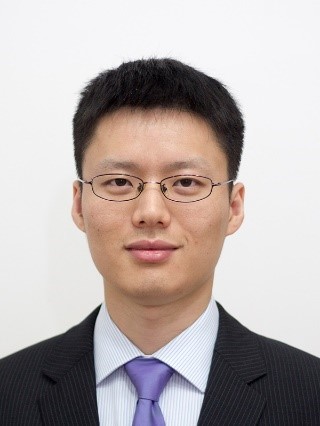Xinwei Wang
Emerging thin film technology
Peking University Shenzhen Graduate School, Shenzhen, China
Email: wangxw@pkusz.edu.cn
Biography
Education
2008–2012 Ph.D. in Chemical Physics Harvard University, United States
2004−2008 B.Sc. in Physics Peking University, China
Academic Appointments
2020− Associate Professor (PI, tenured), Shenzhen Graduate School, Peking University
2013−2020 Assistant Professor (PI), Shenzhen Graduate School, Peking University
2012 Postdoctoral Fellow, Harvard University
Academic Service
AVS, Thin Film Division, Program Committee Member
IAEA Technical Meeting, International Program Advisory Committee Member
Research Interest
Atomic layer deposition (ALD): process development and mechanism investigation.
ALD applications in microelectronics, detectors, photovoltaics, and catalysis.
Published >100 peer-reviewed journal papers, citations >4000, H-factor 34.
Website: https://web.pkusz.edu.cn/wangxw
Abstract for Presentation
Atomic Layer Deposition of Iron-Group Chalcogenides: Processes and Mechanisms
The iron-group (iron, cobalt, and nickel) chalcogenides are a class of fascinating materials, which have many applications in cutting-edge technologies. Atomic layer deposition (ALD) is a highly useful technique to fabricate thin film materials. Over the past few years, ALD of iron, cobalt, and nickel chalcogenides has been developing very rapidly, with many new deposition processes being developed and demonstrated for promising applications [1]. To date, a number of chalcogenides, including FeSx [2-3], CoSx [4], NiSx [5-6], FeSe2, CoSe2, and NiSe2 [7], have been successfully synthesized by thermal and/or plasma-assisted ALD, and studies on surface chemistry and film growth mechanisms have also been followed to understand the underlying ALD mechanisms [9-11]. On the other hand, despite of numerous progresses, considerable scientific and technological gaps and challenges are still prominent in this area. In this representation, I will report our latest progresses on the ALD of iron, cobalt, and nickel chalcogenides, with particular focuses on the process development and detailed growth mechanism investigations.
References
[1] X. Wang, Chem. Mater., 33 (2021) 6251.
[2] Z. Guo, X. Wang, Angew. Chem. Int. Ed., 57 (2018) 5898.
[3] Y . Shao, Z. Guo, H. Li, Y . Su, X. Wang, Angew. Chem. Int. Ed., 56 (2017) 3226.
[4] H. Li, Y . Gao, Y . Shao, Y . Su, X. Wang, Nano Lett., 15 (2015) 6689.
[5] H. Li, Y . Shao, Y . Su, Y . Gao, X. Wang, Chem. Mater., 28 (2016) 1155.
[6] H. Li, R. Zhao, J. Zhu, Z. Guo, W . Xiong, X. Wang, Chem. Mater., 32 (2020) 8885.
[7] Z. Guo, R. Zhao, S. Yan, W . Xiong, J. Zhu, K. Lu, X. Wang, Chem. Mater., 33 (2021) 2478.
[8] R. Zhao, X. Wang, Chem. Mater., 31 (2019) 445.
[9] R. Zhao, S. Xiao, S. Yang, X. Wang, Chem. Mater., 31 (2019) 5172.
[10] J. Zhu, R. Zhao, J. Shi, Q. Wa, M. Zhang, X. Wang, Chem. Mater., 33 (2021), 9403.
WELCOME TO CHINA TO ATTEND THE ICANS
23-26 August, Nanjing, China
Connect with us:



